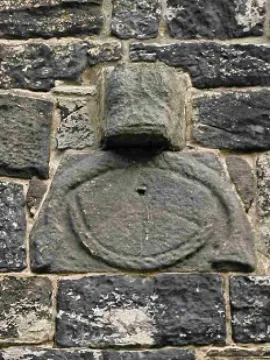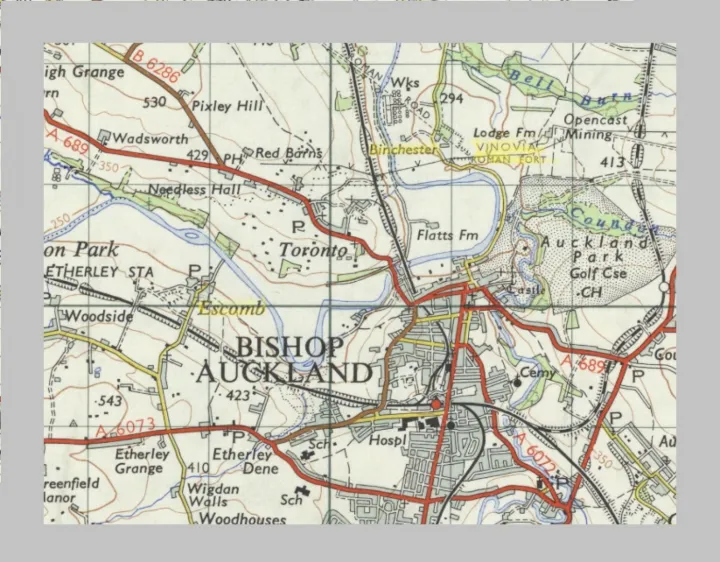Discovering a little-known 7th century gem








Audlem and District History Society
History Shorts 42 by John Whitehead
Escomb Church
Some years ago, freed by retirement to make a tour of Anglo-Saxon monuments in the North East, I was driving south on the A68 near Bishop Auckland, when I spotted a sign to a 'Saxon Church'. This led me to a small village, and in the middle of a post war council estate was this Saxon church in its Celtic circular churchyard. It is one of the few stone-built churches left from those early times, as most then were constructed of wood and are long gone.

The irregular stone for the walls had been brought from the remains of the nearby Roman fort at Binchester, the 'Pompeii of the North'. The Roman chancel arch was so well constructed that it needed no mortar. On one stone – upside down (a message there!) – could be faintly discerned 'leg VI' – Hadrian's 6th legion, which he had employed to start building his famous wall. Interestingly, quite recently excavation at Binchester (a Roman fort near Bishop Auckland) has discovered a silver ring, dating from the 3rd century before the toleration of Christianity, inscribed with an anchor and fishes, symbols of Christian salvation.

Had a small congregation of believers continued into the 7th century? More likely Escomb formed part of a monastic foundation established through the spread of evangelism which stemmed from St. Aidan's Abbey at Lindisfarne, Holy Island, in the 630's. By the church door hung a framed copy of Rudyard Kipling's poem Eddi's Service (AD 687), particularly interesting to me because I had helped to have that poem published in an SPCK book on Seasonal Worship from the Countryside. The poem tells of the priest Eddi (Eddius) calling a Christmas Service in the windswept marshes near Selsey Bill in Sussex. 'An old marsh donkey came, bold as guest invited....The storm beat on at the windows /the water splashed on the floor /and a wet yoke-weary bullock /pushed in through the open door.....They steamed and dripped in the chancel /they listened and never stirred.' Anglo-Saxon Christians had a strong feel for the natural world, which Kipling has caught in this poem, as he did in his Jungle Books and the adventures of Mowgli, which so many of us enjoyed growing up. About this period the cowherd Caedmon wrote the first known poem, about creation, in Old English, prompted by the renowned Hild(a), abbess of Whitby.

Outside the building, embedded in the south wall, is one of the earliest Anglo-Saxon sundials. Marked on the circular face, below the encircling snake figure characteristic of Northumbrian art, are three radiating lines, indicating the three times of prayer – Terce (3 a.m.!), Sext (6) and None (9).
Through such dials ordinary people had begun to recognise man-made time, as opposed to just the day's course from sunrise to sunset. Our St. James church also has a medieval dial on the south buttress by the now blocked priest's door.
I left little Escomb refreshed in a sense of kinship with Anglo-Saxon England. A different era began in 1066 when 'Bill Conq' – as we called him in my first school – much transformed our culture to Norman and French. England became a sort of colony of France; some of the medieval kings, who often spent little time in England, could barely understand English.
I'm so glad I spotted that sign.

Get In Touch
AudlemOnline is powered by our active community.
Please send us your news and views using the button below:
Email: editor@audlem.org





